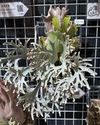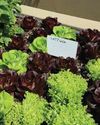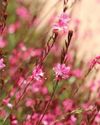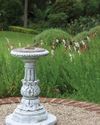
Geographically, this is the largest outbreak of PSHB in the world, affecting over 80 tree species in agricultural, commercial and urban sectors. The first local discovery was made in the KwaZulu-Natal National Botanical Gardens, and the beetle’s presence has since been confirmed in eight of our nine provinces. Unfortunately, there is currently no effective treatment available, and once the beetle has made its way into a tree its demise seems inevitable.
The deadly spread
PSHB is native to Southeast Asia, but due to globalization and increased interconnectedness the beetle has through international trade found its way to Israel, California and now South Africa. As they are so tiny (about 2mm long) and burrow into the wood, they are very difficult to detect in early stages and are often only discovered as the host tree shows signs of dying. The problem has spread throughout the country with the movement of infested deadwood (like firewood). Current projections of the scale of the infestation reach up to half a million trees in Gauteng alone, and that number is set to grow. Without proper management and awareness, the potential for the continued spread of PSHB through wood products is a huge risk. A forecast by the website Tree Survey predicts that by 2022 all urban sites across the country will have a presence of PSHB, and the areas with current high levels of infestation will reach the maximum level of infestation of susceptible trees (20 – 30% of all trees).
The Science-y Stuff
This story is from the {{IssueName}} edition of {{MagazineName}}.
Start your 7-day Magzter GOLD free trial to access thousands of curated premium stories, and 9,000+ magazines and newspapers.
Already a subscriber ? Sign In
This story is from the {{IssueName}} edition of {{MagazineName}}.
Start your 7-day Magzter GOLD free trial to access thousands of curated premium stories, and 9,000+ magazines and newspapers.
Already a subscriber? Sign In

Fixing things in 2025!
One should start a new year by sitting firmly on one's throne, not breaking it and falling off!

Silver staghorn ferns at platinum prices
When we think of a staghorn fern, Platycerium bifurcatum, which can be found in many South African gardens, usually comes to mind.

Tic Tac Toe
Keep children (and adults) busy for hours with this stylish game for the patio.

Let's change the way we think about food
Healthy food is all about preparing fresh ingredients in the simplest (yet tasty) way. Today's balanced diet includes lots of fiber, plenty of fruits and vegetables, and proteins in the form of meat, like lean pork. Keep it interesting, and you can't go wrong.

Grow Wayne's favourite things
Midsummer is when your garden is at its lushest. It's always playtime in the garden, and whether it's lying under a tree or finding more stuff to grow, gardens are our safe space for self-expression and joy.

THE BEST OF SUMMER
Summer annuals offer more than just colour, texture, and variety in a garden.

PLANT A COLOUR explosion!
Angelic angel wings and a dwarf morning glory can keep colour all around you from spring to autumn, and will be back to do it all over again next year...

SAVING TIME in the garden
Just like Jamie Oliver can teach us to cook a meal in 15 minutes, there are ways to garden in 15 minutes or less. Here are some of our top time-saving tips to make gardening easier, quicker and more fun.

FUN PROJECTS for the New Year!
If you want a wow factor for your next party, try revamping a piece of driftwood into something amazing with these few steps.

Evolving for LONGEVITY
A continuously transforming garden has longevity, which is certainly true for the garden at Brahman Hills in the Midlands of KwaZulu-Natal.